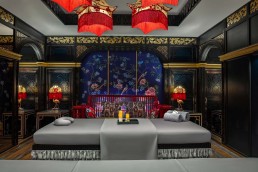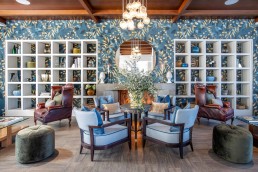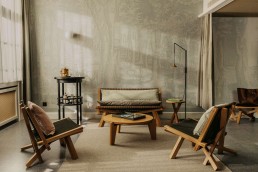Real estate investor Karl Slovin partners with Salt Hotels to breathe new life into a former industrial works in the Hudson Valley.
From the Yankee Stadium to the Met Cloisters to the Empire State Building, Hutton Brickyards, quite literally, created the building blocks of New York City. As the go-to manufacturer of quality red brick, the yard churned out the rectangular slabs for over a century, operating from a waterside factory on the banks of the Hudson River.
Since its closure, much of the infrastructure has been dismantled, but a handful of elements remain – including three steel-framed kiln sheds and a Lidgerwood crane. This quartet of structures, some of the only surviving examples of brickmaking architecture in the Hudson Valley, were at the centre of real estate investor Karl Slovin’s plans when he arrived on the scene seven years ago, having acquired the site in a dilapidated state. A passionate New Yorker with a family home in Rhinebeck just across the river, his ambition was to dig up the industrial roots of the works and celebrate a Gilded Age era that had all but vanished. After deciding a luxury retreat was the path to take, the search was on for a hospitality group that would share his vision and implement it with authenticity. Enter Salt Hotels.
“A lot of hotels in Upstate New York are focused on membership clubs and exclusivity, but we really wanted Brickyards to be an inclusive destination where locals can come and eat, drink and stay on the river,” says the group’s co-founder and CEO, David Bowd.
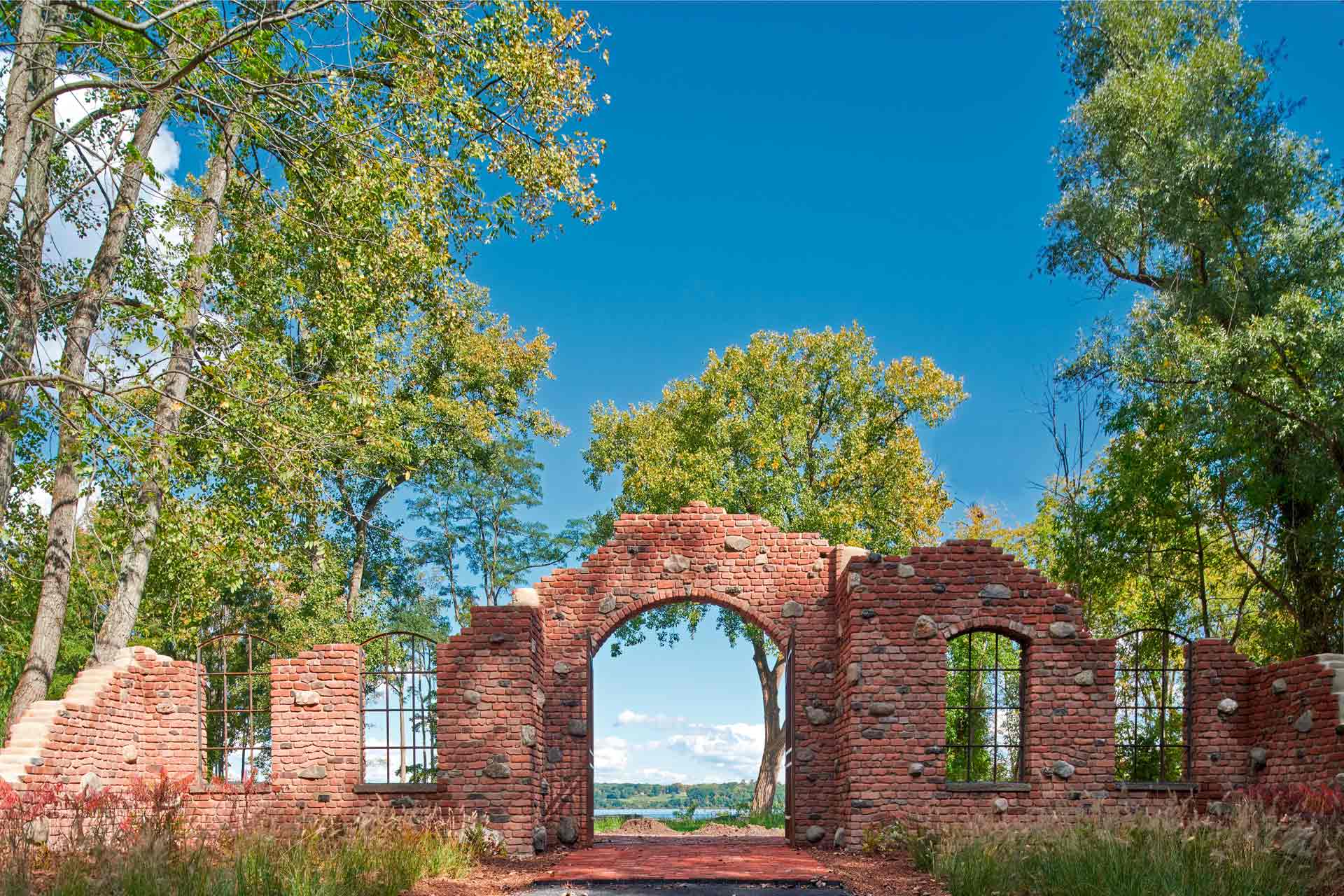
The hotelier laid the foundations for Salt Hotels in 2011, and has since opened a collection of unique properties in North America, including Asbury Ocean Club in New Jersey. It was here that he ventured into education, developing the Salt School training programme to offer those from the surrounding community the chance to learn the ropes. Having himself left school at 15-years-old before landing his first job in a hotel, the initiative is one that Bowd is particularly proud of. “I wanted to create an environment that helps people get into hospitality,” he explains. “Plus it means that we have locals working in our hotels; who better to tell you the best places to go than someone who lives in the area.”
While the front-of-house team are on-hand to impart their wisdom throughout the course of a guest’s stay, the sense of place is evident from the outset. Brick ruins on the drive in stand as a proud reminder of what went before, while an old Lidgerwood crane towers over the site.
Salt’s mindful approach is carried through the site, which, unlike traditional developments, comprises a collection of individual guest cabins dotted across the landscape. The group’s Chief Creative Officer, Kevin O’Shea, collaborated with New York-based architect Kristina Dousharm to design the 300ft2, shed-style lodges, which are fronted by floor-to-ceiling glass that cleverly reflects the adjacent meadow for a sense of harmony.
“Our guiding principle was the Shaker movement, which involved clean lines, letting the landscape speak for itself and avoiding too much ornamentation – hence why the end of each cabin is crafted entirely from glass to frame the view,” says O’Shea, adding that Slovin had a hand in every detail of the cabins. “They’ve also been positioned in a way that reduces people’s awareness of the other units around them.”
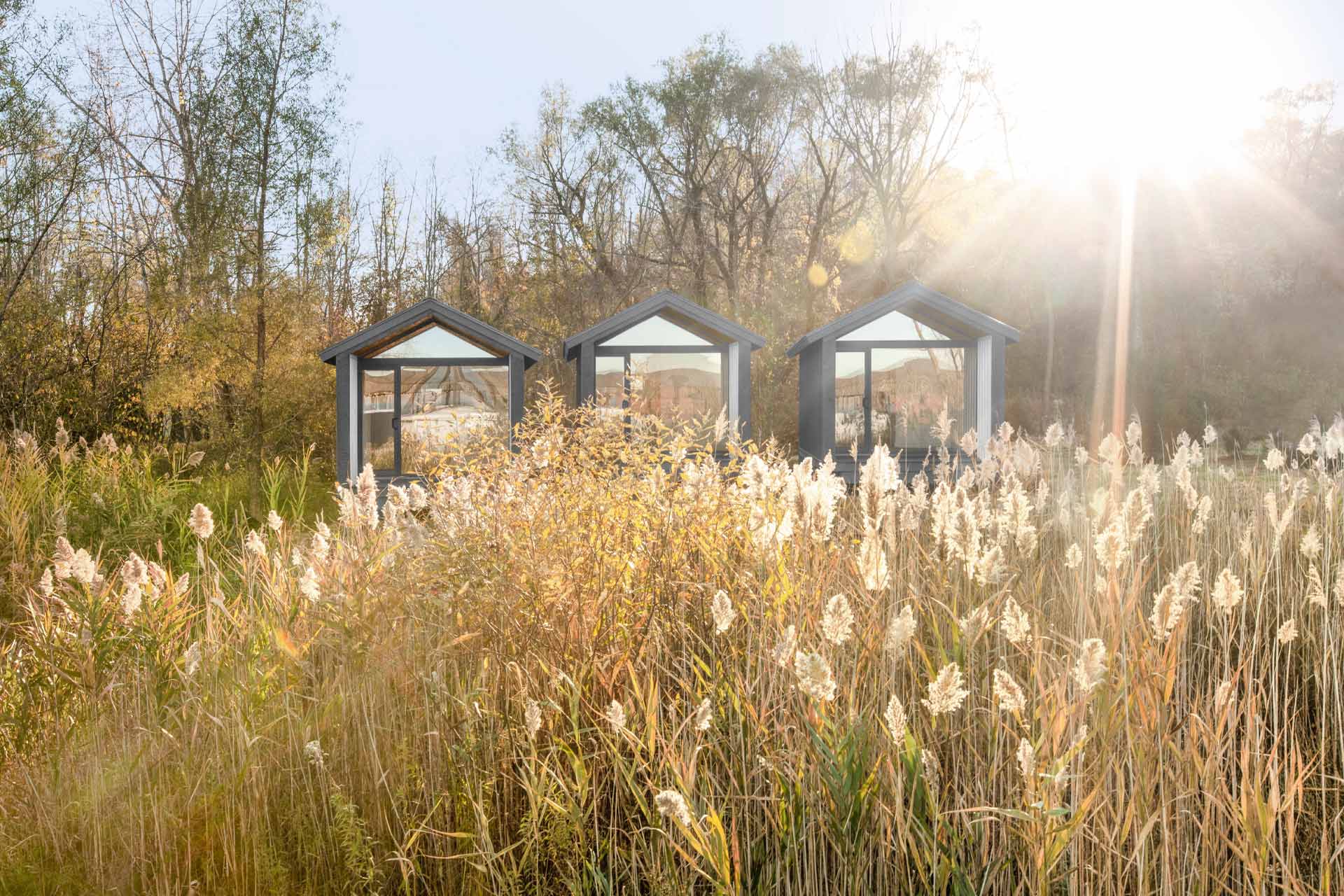
Spread across 73 acres, it would be easy to lose oneself in this sprawling campus, but that’s all part of the appeal. When guests aren’t hunkering down for the night in these bucolic boltholes, they are invited to explore the great outdoors, whether via cross-country skiing or guided kayak experiences. The Empire State Trail – a 750-mile route for cyclists and hikers – passes through the grounds too, while the 520-acre Quarry Waters state park will arrive soon to protect the riverfront.
Creating a hotel that fosters a healthy lifestyle was a primary focus for Bowd and his team, particularly in the wake of the pandemic: “People’s mental and physical health have both been affected to differing degrees over the last 12 months, which is one of the key reasons we made sure there was a spa element, gym and outdoor programming,” explains Bowd. “More and more of us are looking for that almost rehab moment of exiting lockdown and detoxing for a few days, and the site’s proximity to the city means it’s easy to do that.”
After a day of activities, guests can retire to The River Pavilion, a restaurant and bar helmed by chef Dan Silverman, previously of Manhattan’s Balthazar and Minetta Tavern. Housed within one of the steel-framed kiln sheds and open to the public as a means of bringing the community together, the open-air setting relies solely on wood-burning heat sources – with lumber sustainably retrieved from the grounds – and channels an industrial aesthetic through steel trusses, festoon lighting and bricks, of course. “During the manufacturing process, the brickyard would use the cast-offs as landfill, meaning anywhere you dig throughout the property, you’ll find bricks,” O’Shea quips. “We’ve been pulling cast-offs up across the site and using them in interesting ways, from fence posts and pathways to filling cages in the dining pavilion to define the restaurant. There are bricks everywhere!”
The culinary offering also includes The Larder, from which essentials, indulgences and whimsical items can be ordered via an in-room tablet and delivered straight to the cabin’s door, together with a cocktail cart that circles the resort, serving residents who have flown a flag outside of their accommodation to signal for a top-up. The idea, according to Bowd, was born out of a desire to provide Hutton’s guests with a level of service comparable to luxury resorts around the world: “In a typical hotel, at five o’clock, you’re getting ready to go for dinner and think, ‘I’ll just pop down to the bar for a cocktail’, but in a space that’s so spread out, that simple thing becomes much more difficult operationally. And that’s how the cocktail cart came about. It’s turning those challenges into something that’s fun, which I think makes people’s stay a little more interesting.”
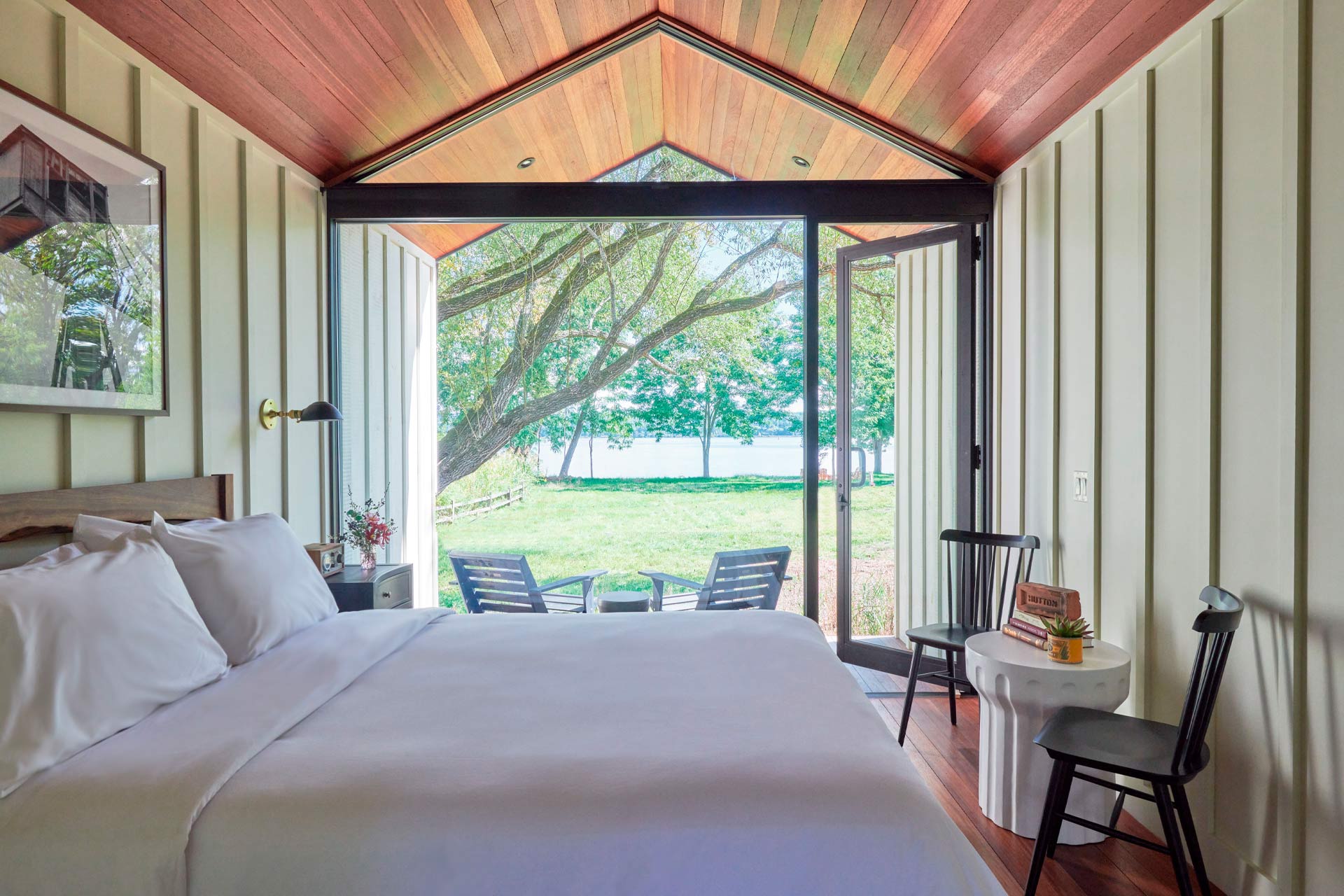
O’Shea agrees, citing that the biggest challenge for Salt was figuring out how they would deliver a quality experience over such a vast expanse of land. “We asked ourselves, ‘how do we strike the balance between connecting people with nature and providing them with the amenities of a luxury hotel?’ Our solution was to use technology as a means of connecting guests and staff members so that at any point, through an app on their phone, residents can request room service, retail or a ride. We’re aiming to create a seamless experience, so that they’re always connected if they need to be, but also have the ability to completely disconnect and head into the woods for the day.”
With Slovin’s initial concept centred around events, part of the vision going forward also involves catering for weddings and corporate retreats. Having served as a bedrock for the site over recent years, a series of indoor and outdoor spaces – from Butler Pavilion with a 4,000-guest capacity to Hutton Hall, which can host up to 400 people standing and 160 in banquet seating, as well as two other pavilions – are expected to welcome larger crowds once more as Covid restrictions are relaxed.
There’s room for the hotel to grow too, with Bowd noting that Salt will use the summer season as a lesson before exploring new ventures and areas – like a restaurant for the winter months – where it could be developed in a manner that maintains the site’s connection to nature: “The beauty of the space is that we could put 20 cabins up in the woods that would never be seen by anybody in the existing ones, so it allows us that expansion without disturbing what’s already here.”
The final bricks may well have been fired here over 40 years ago, but the flame of the former industrial works continues to burn brightly in its newly remodelled form, helping build the future of hospitality.
EXPRESS CHECK-OUT
Owner: Karl Slovin
Developer: MWest Holdings
Operator: Salt Hotels
Architecture: Kristina Dousharm Architecture (cabins)
Conservation Architects: Chazen Companies, Atlas Industries
Interior Design: Kevin O’Shea (Salt Hotels in-house design team), Kristina Dousharm Architecture
Graphic Design: Alexander Isley
Lighting Design: Blue Hour Lighting
Landscaping: Augustine Nursery
Main Contractor: Equastate Builders
www.huttonbrickyards.com
CREDITS
Photography: © Courtesy of Salt Hotels
Related Posts
29 March 2021
Feature: Capella Hanoi, Vietnam
26 March 2021
Feature: Terme di Saturnia, Tuscany
23 March 2021
